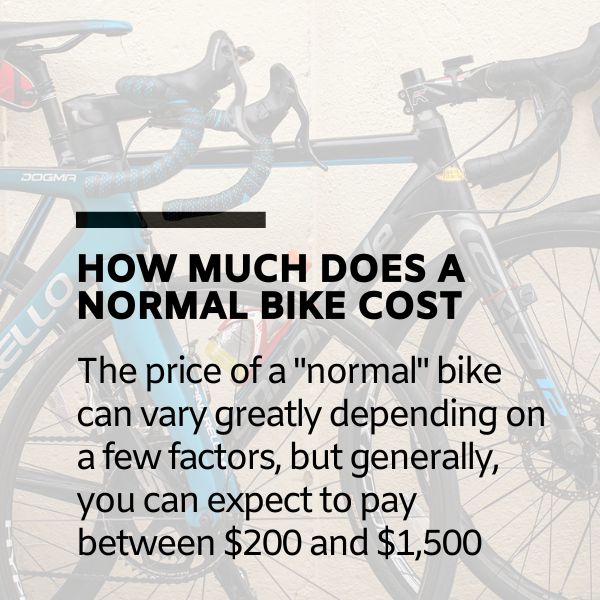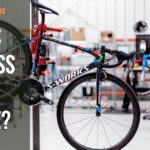When embarking on the journey of cycling, a super important question arises: how much should you spend on a bike? This decision can be daunting given the vast array of options, from budget models to high-performance machines. Ask a cyclist and they may jokingly respond “how long is a piece of string?” While there’s no definitive right answer, it helps to have expectations on value at different prices. We’ve categorized bikes into five tiers – and although trends won’t apply to every brand, it provides guidance on component quality you can typically expect at each level. So read on to discover the ideal bike for your needs and budget when weighing that key question: how much should I spend on a bike?
Evaluating Your Riding Style and Priorities
When entering the complex world of bike buying, the dizzying array of models, components and technical jargon can overwhelm newcomers. Rather than fixating on frame materials, gear ratios or suspension travel, start by clearly defining your riding style and biking needs. This self-reflection lays the foundation for making an informed decision when selecting your two-wheeled companion.
Analyze How and Where You’ll Ride
Carefully consider when, where and how often you plan to ride. Commuting daily on paved roads has very different demands than navigating off-road singletrack trails each weekend. Be realistic about your general fitness level and cycling abilities as well. Planning to suddenly pedal 5,000 miles a year or bomb down advanced mountain bike routes could be overzealous if you’re just starting out.
Prioritize Key Performance Factors
Now contemplate the riding experiences most meaningful to you. Is achieving new personal distance records paramount or do you simply relish meandering along scenic pathways? How important are comfort, reliability, durability or low maintenance when riding? Defining these priorities helps identify the technology, components and bike types best delivering your ideal rides.
Consult Experienced Cyclists
With a clear profile of your riding identity, tap cyclists in your local area for input. Visit bike shops and peruse gear in person. Ask about popular models and components suited to your goals. There’s no substitute for throwing legs over potential bikes and assessing feel, fit and design synergies firsthand. Leverage these conversations and test rides to make an informed bike buying decision catered to your needs.
By first establishing your riding style rather than fixating on product details in a vacuum, you can make a bike purchase better supporting the experiences bringing you joy on two wheels.
Bike Types and What Impacts Cost
You’ll also need to decide what type of bike best fits your goals. Key options include:
- Mountain Bikes: Rugged and stable, mountain bikes are ideal for traversing bumpy off-road terrain and trails. Hardtail models have front suspension while full suspension bikes have shocks on both wheels, but cost $1,000+ more.
- Road/Gravel: Emphasizing aerodynamics and speed, road and gravel bikes are efficient on paved or unpaved surfaces. Expect lightweight frames, smooth-rolling wheels and performance-oriented parts.
- Hybrid: Blending comfort and athletic capability, hybrid bikes suit casual fitness riding, commuting and running errands. Their versatile design transitions well between pavement and moderate trails.
The frame material (carbon, steel, aluminum) impacts the weight, stiffness, ride quality and price. Meanwhile, component choices affect durability, shifting/braking smoothness and replacement costs.
How much should i spend on a Bike?
Unfortunately, there’s no one-size-fits-all answer to how much you should spend on a bike. It depends on a variety of factors, including:
Budget Bikes – Where to Start Under $500
For new riders or occasional short rides, budget-friendly bikes under $500 minimize initial investment. At this price, you can expect durable steel or aluminum frames, cheap but functional parts like basic gearing and rim brakes and heavier but reliable alloy wheels.
While performance and comfort take a backseat to affordability, these bikes meet basic transportation needs for many casual or first-time riders. If opting for this range, test models firsthand and give suspension, shifting and other components a thorough check. Minor assembly frustrations or poorly made parts could spoil early riding experiences.
Mid-Range Bikes – Finding Balance From $500 to $1,500
As skills progress or regular riding increases, mid-range models between $500 to $1,500 deliver marked upgrades in quality of life on the road or trail. Aluminum and carbon frames reduce bike weight while precision parts enhance reliability.
Shimano, SRAM and other renowned brands grace many bikes at this tier, making sure smooth and consistent shifting across long distances. Additionally, disc brakes become more common, improving stopping power in wet conditions. Overall, mid-range bikes strike an ideal balance between value, performance and durability for passionate weekend warriors or racers-in-training.
High-End Bikes – No Compromises Above $1,500
Finally, for cycling devotees pursuing podiums or personal bests, high-end bikes over $1,500 represent the apex of technological innovation. Expect featherlight carbon fiber frames paired to aerodynamic wheels rolling on buttery smooth hub bearings. Your fingers will find firm, precise feedback dialing through gears with elite components Shimano Dura-Ace Di2.
While the upfront investment exceeds lower tiers, these exotic speed machines deliver unmatched reliability and efficiency mile after mile. For competitive racers or those simply seeking superlative cycling experiences justifying the price, high-end bikes check every box.
Factors Influencing Bike Prices
When assessing a new bike purchase, the sticker price naturally looms large in decision making. While budget plays a super important limiting role, recognizing what specific elements impact pricing helps buyers determine ideal value at different levels. Four key factors include:
Bike Type and Intended Use
Hybrid, mountain, road, electric and other bike categories have vastly different builds to serve unique riding purposes. Off-road mountain bikes require durable, suspension-equipped frames and sturdy components to handle trails. Road bikes instead prioritize lightweight materials and aerodynamic profiles for speed. These specialized designs impact pricing.
Frame Materials and Construction
The choice of materials used in manufacturing the bike frame and components significantly impacts weight, ride quality, longevity and cost. Aluminum alloy offers budget-friendly durability. Carbon fiber, titanium and exotic alloys provide exceptional strength-to-weight ratios but exceed $1,000 price minimums in most cases. Complex tube shaping and precision welding also raise prices.
Quality of Groupsets and Components
The drivetrain, brakes, wheels and accompanying components directly influence mechanical precision and reliability when riding. Respected brands like Shimano, SRAM and Campagnolo draw premiums for proven reputations delivering buttery smooth shifting and power transfer mile after mile. Top-shelf groups like Shimano Dura-Ace Di2 reach $3,000+ territory but enhance performance substantially.
Brand Reputation and Boutique Status
Established bike makers invest heavily in research and development, manufacturing processes and customer service infrastructure – costs reflected in retail prices. Meanwhile, smaller custom frame builders lacking scale must pass on higher per-unit costs. But the cache of riding an artisanal machine offers exclusive prestige.
While intrinsic factors like materials and construction play a major role, brand status and intangible desire add to cost. Defining your needs, weighing investments in quality and acknowledging the emotional pull of cycling go a long ways determining spend.
When deciding how much to spend on your next bike, it’s important to carefully weigh your riding style, frequency, and priorities against different price tiers to find the sweet spot matching both performance needs and budget. While high-end models promise prestige, carefully assess if those extra dollars are best invested to elevate your typical rides or simply sit waiting for occasional use. At Best Bike Parks, we aim to provide actionable insights across budget levels. Define your ideal bike experience and leverage our guidance to discover the perfect model bringing daily joy on the trails or roads at a price you’ll feel great about.









